The Smart Product Search app enhances your store’s search experience by showing hot search terms beneath the search bar. These terms link to specific product or collection pages, helping customers find what they need faster while improving product visibility.
The app also includes search performance analytics to track clicks, add-to-cart actions, and sales from search activity.
This guide walks you through setting up hot search terms and reviewing key metrics to improve product discovery and store performance.
Note
The Smart Product Search app is compatible with all themes in the Theme Market, except for Pluto. Supported themes include:
- Nova2023 theme series: Nova 2023, Night, Sweet, Morning, Bamboo, Moon, Beautynow, Elechub
- Hero theme series: Hero, Modern, Halloween
- Geek theme series: Geek, Impress, Christmas, Venue, Petonly
- Eva theme series: Elegant
- Other themes: Farida, Flash, Wind, Boost, Onepage, Lifestyle
Installing the app
If the Smart Product Search app isn’t installed yet, follow these steps to add it to your store:
1. Go to the App Store: From your Shoplazza admin > Apps, click Visit App Store.
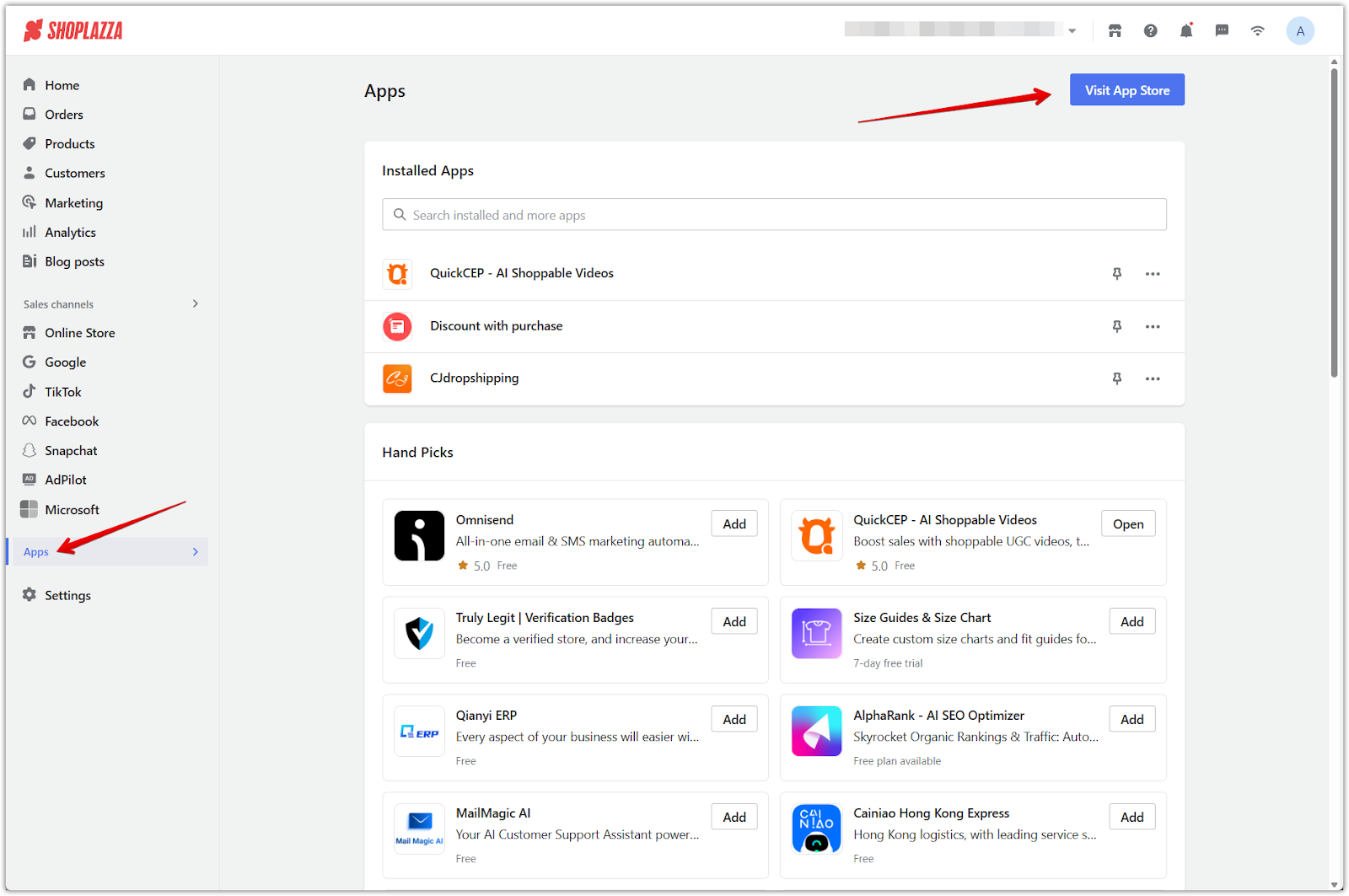
2. Search for the app: Type Smart Product Search into the search bar.
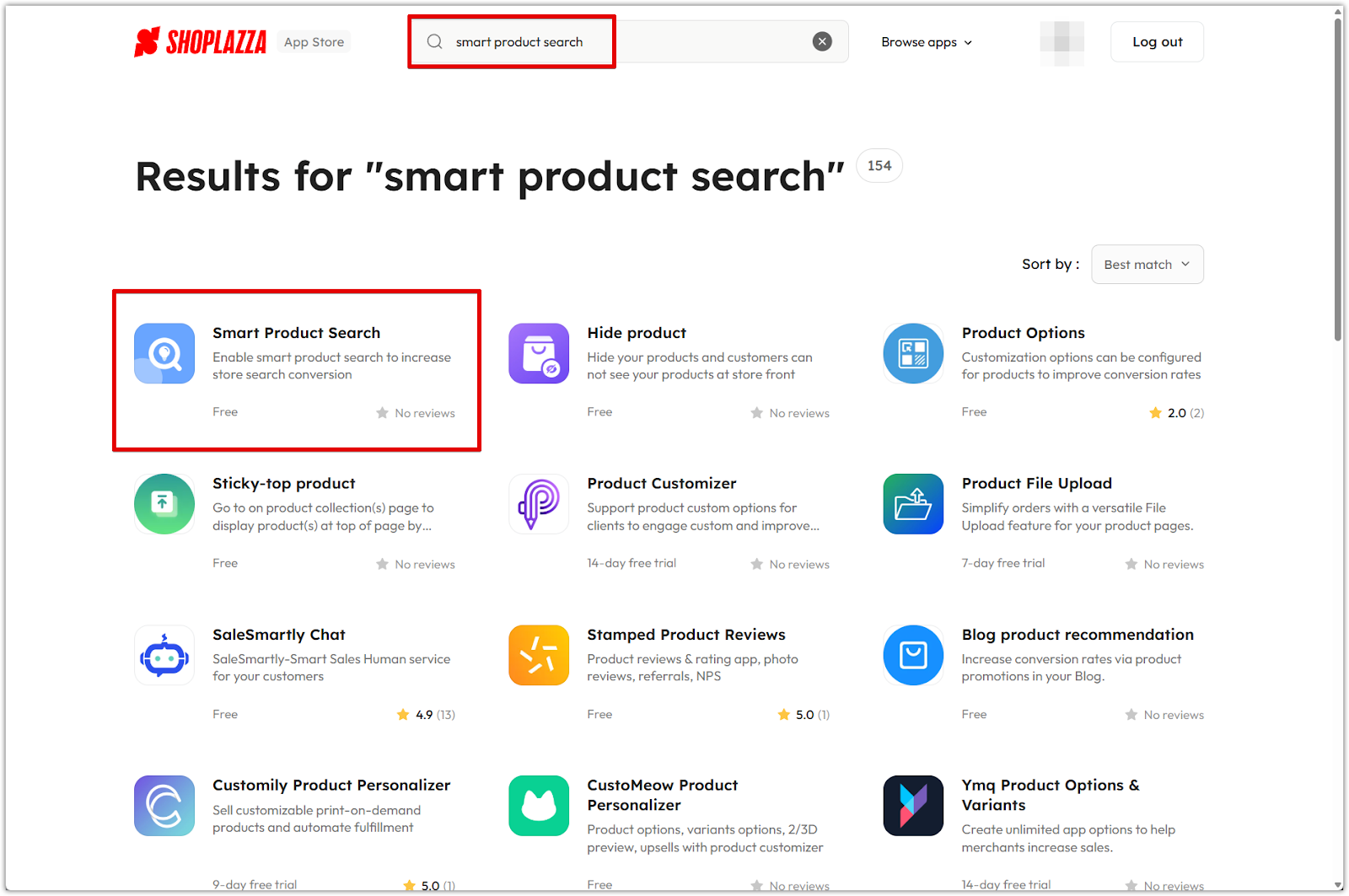
3. Add and install: Click Add app and complete the installation process.
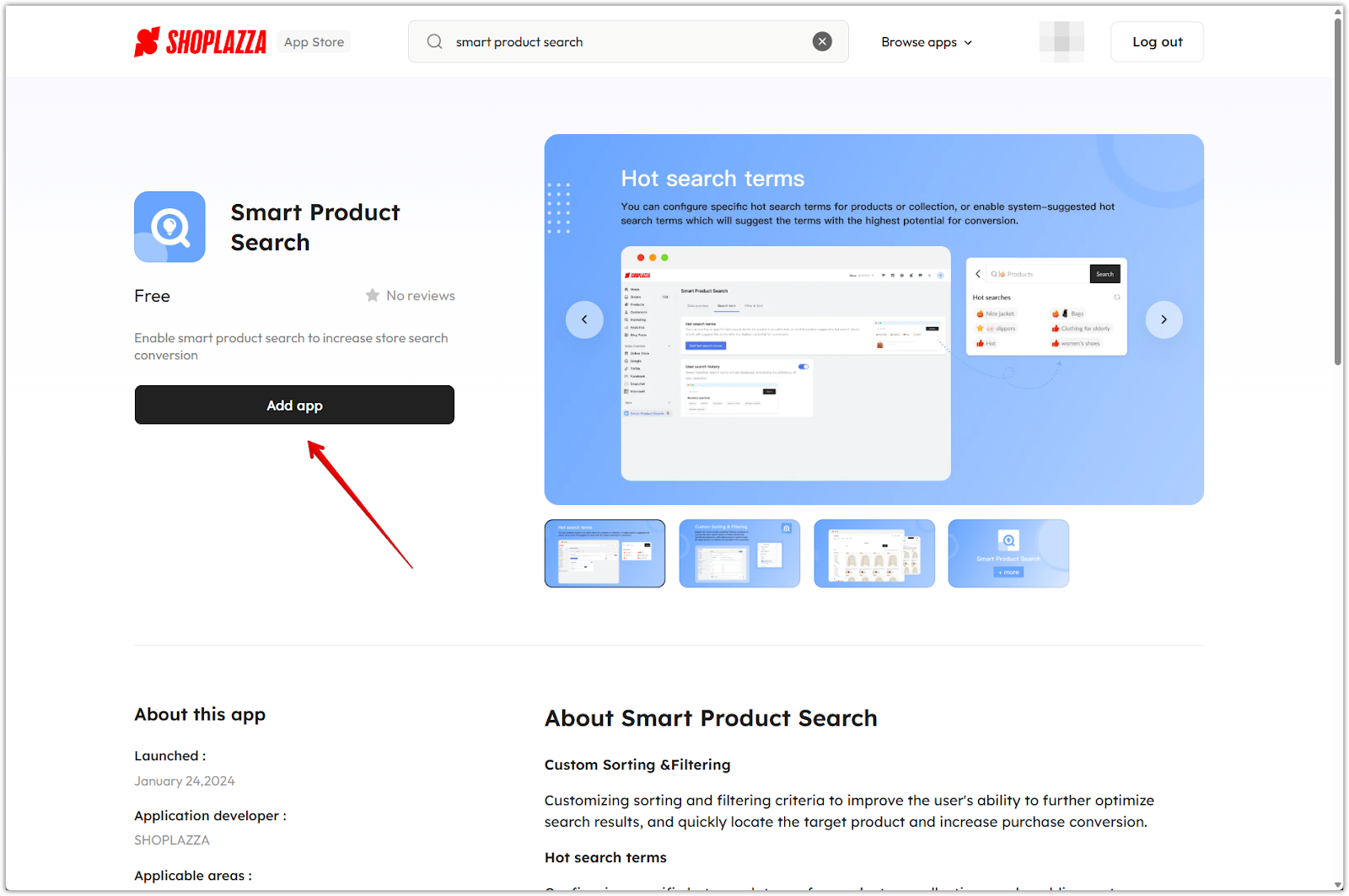
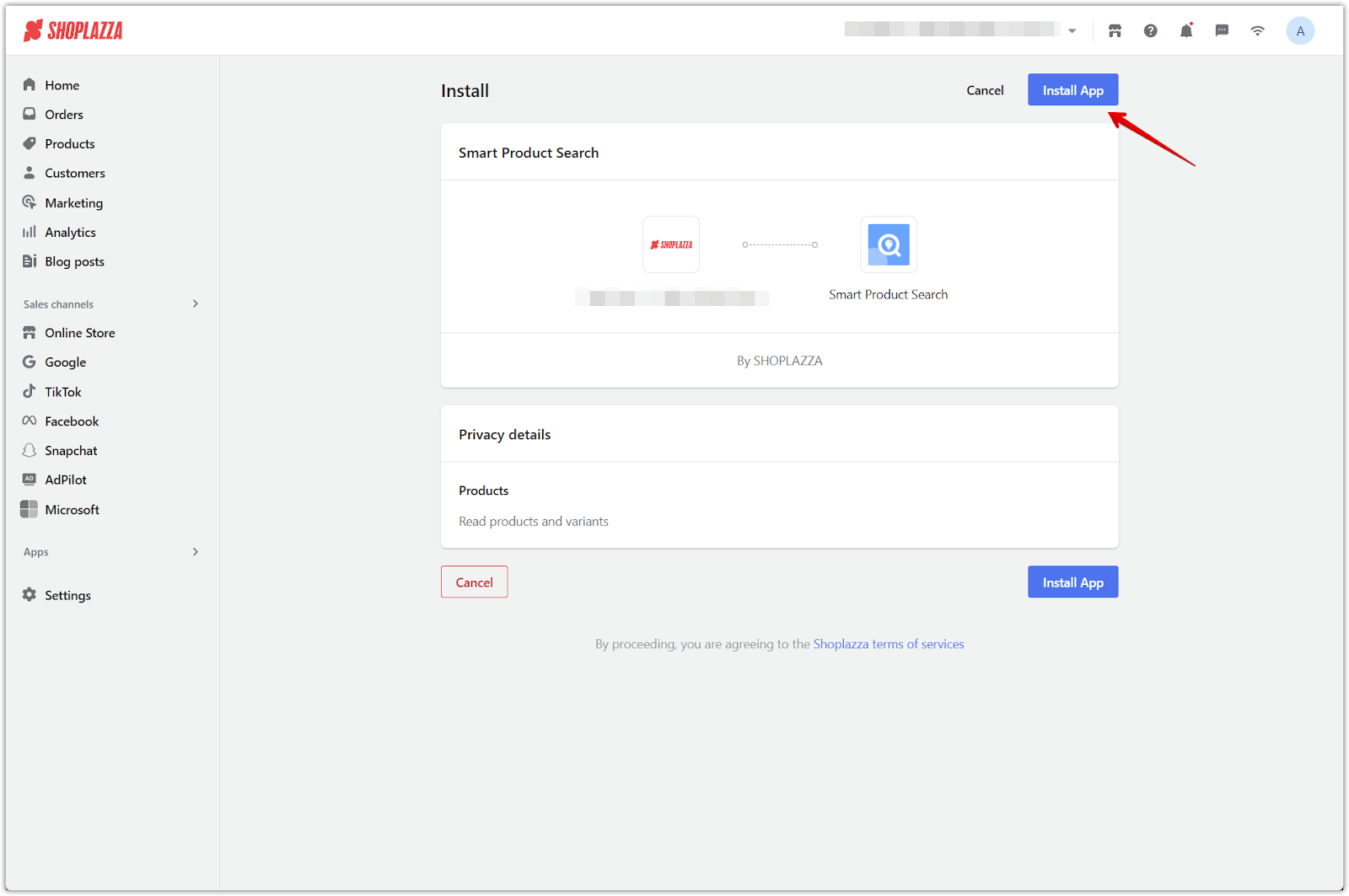
Configuring your search terms
Once the app is installed, or if you already have it, you can start setting up the search terms that guide your customers. These steps show how to add hot search terms, choose their type, and adjust the app’s behavior.
1. Start the process: Begin by navigating to your Shoplazza Admin > Apps > Smart Product Search, and enter the app page.
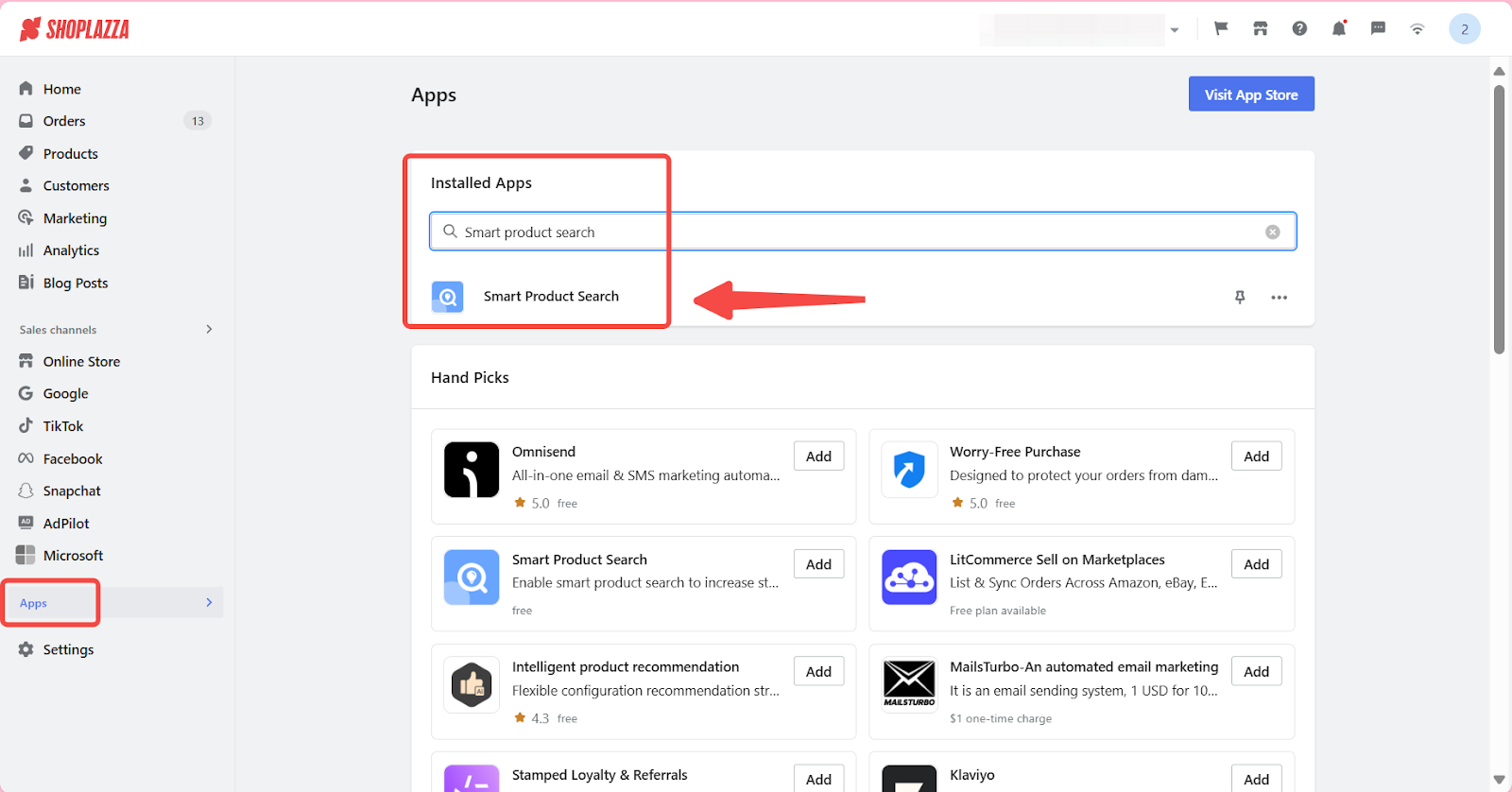
2. Add the search widget to your store header: In the Search term tab of the app, go to Display search widget block on store header and click Add block. This adds the Smart Product Search widget to your theme’s header.
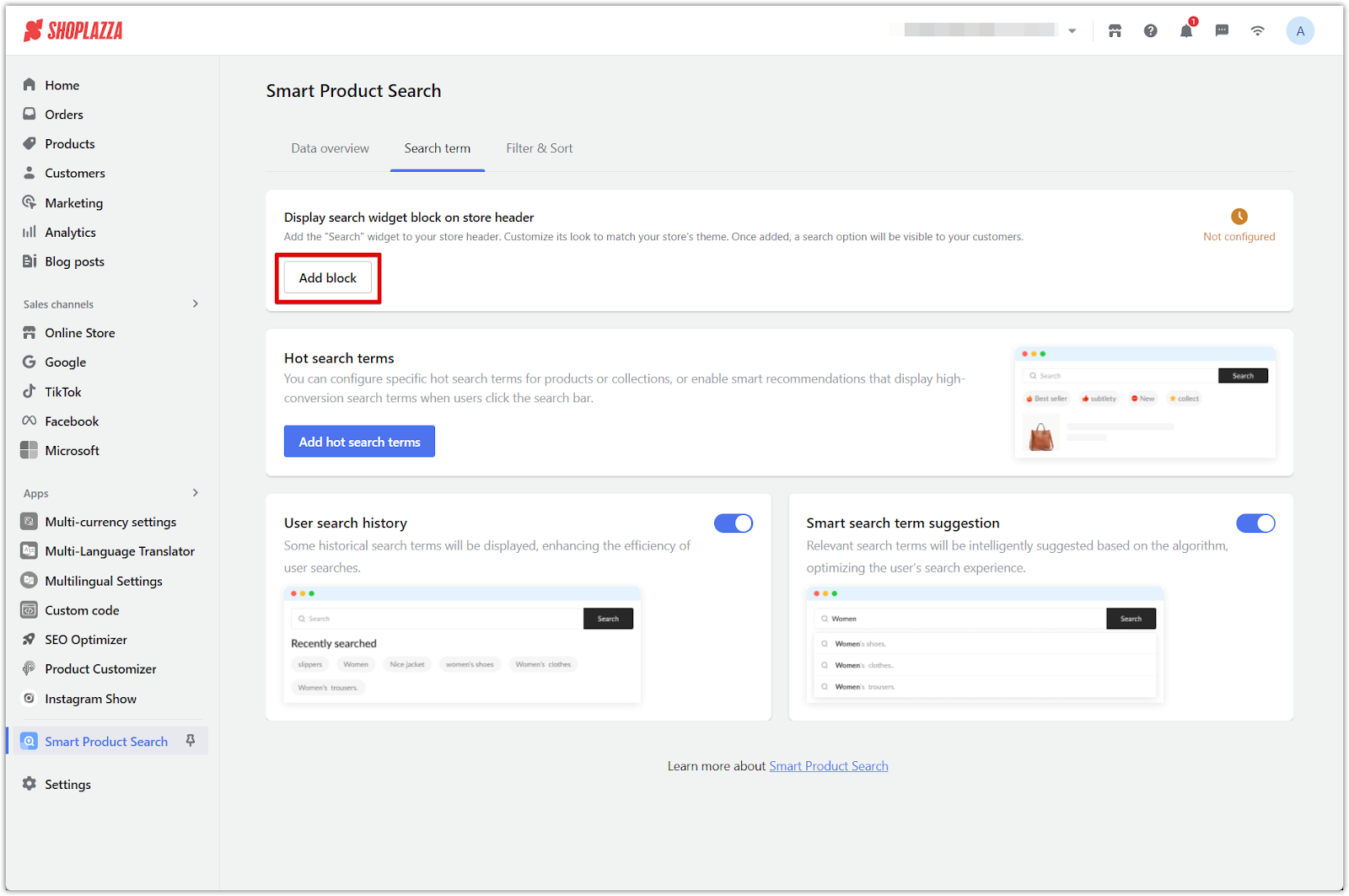

Note
To avoid showing two search bars, go to your theme editor > Header, click the Header title, scroll down, and toggle off Enable search.
3. Add hot terms: Go to the Search terms section and click Add hot search terms. These are the keywords that appear before a customer starts typing.
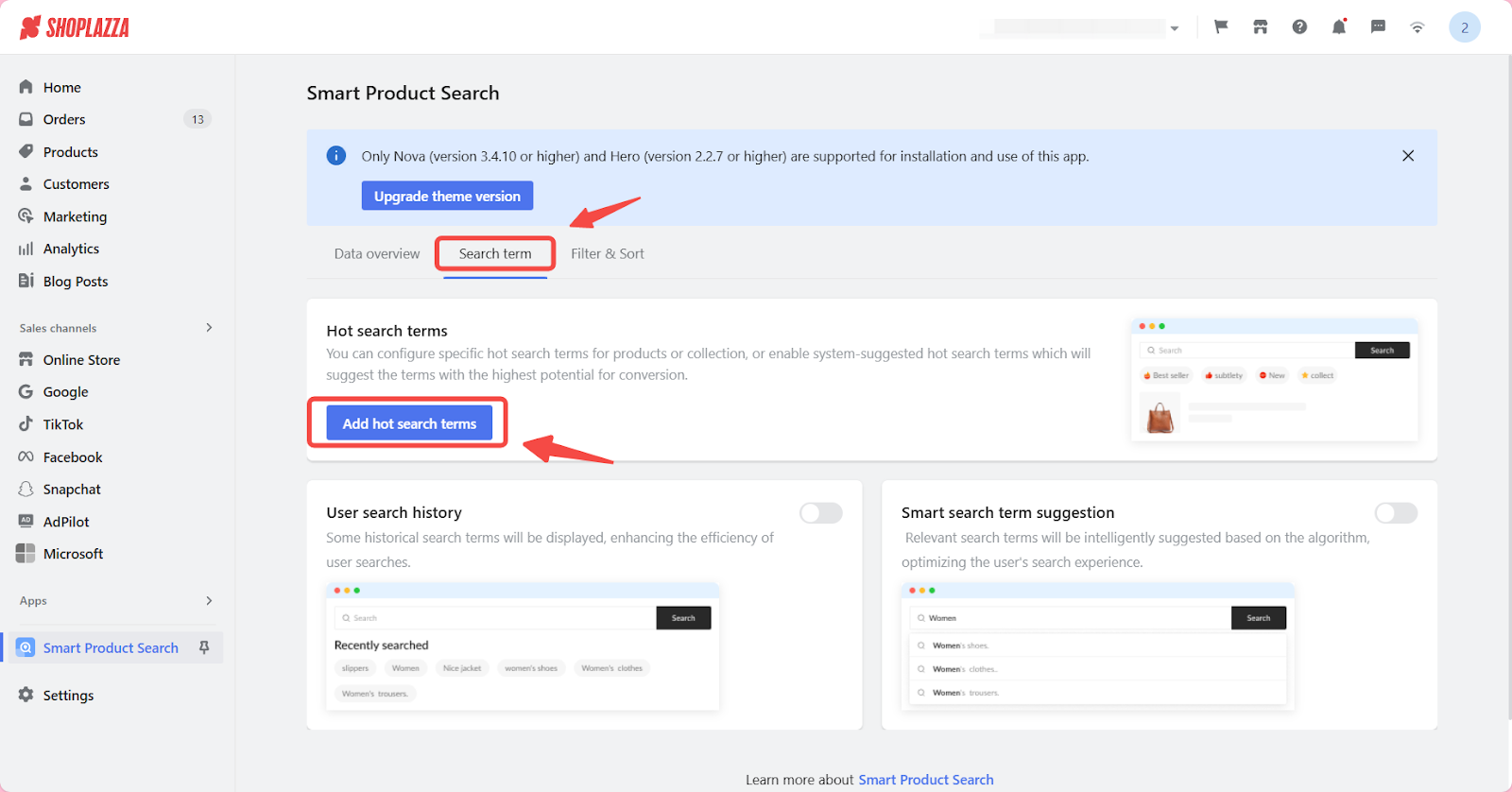
4. Search term types: Set up either system-suggested or custom preset search terms depending on your goals.
- System-suggested hot search terms: Based on customer behavior, up to 60 product titles will appear in the search pop-up. Clicking one of them will show related products. Toggle the setting on and click Save to enable this feature.

- Preset hot search terms: Click Add hot search terms to configure up to 10 specific keywords and their associated page links. Once set, clicking these terms will navigate the user to the linked page. After adding hot search terms, enable the toggle to display them in your store.
- Styles: Choose between text-only or text with images.
- Icons: Add optional icons.
- Page links: Set the page link destination.
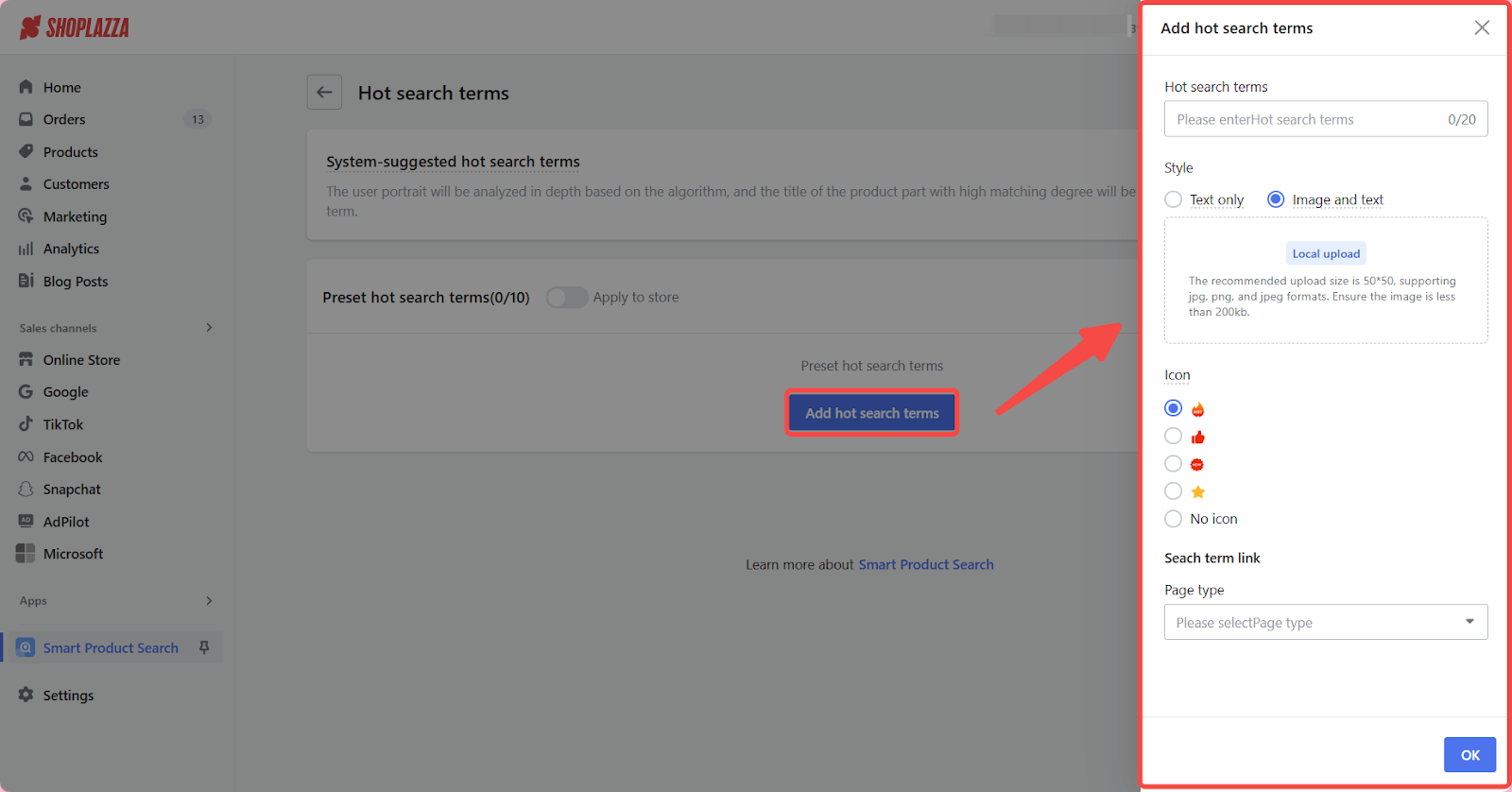
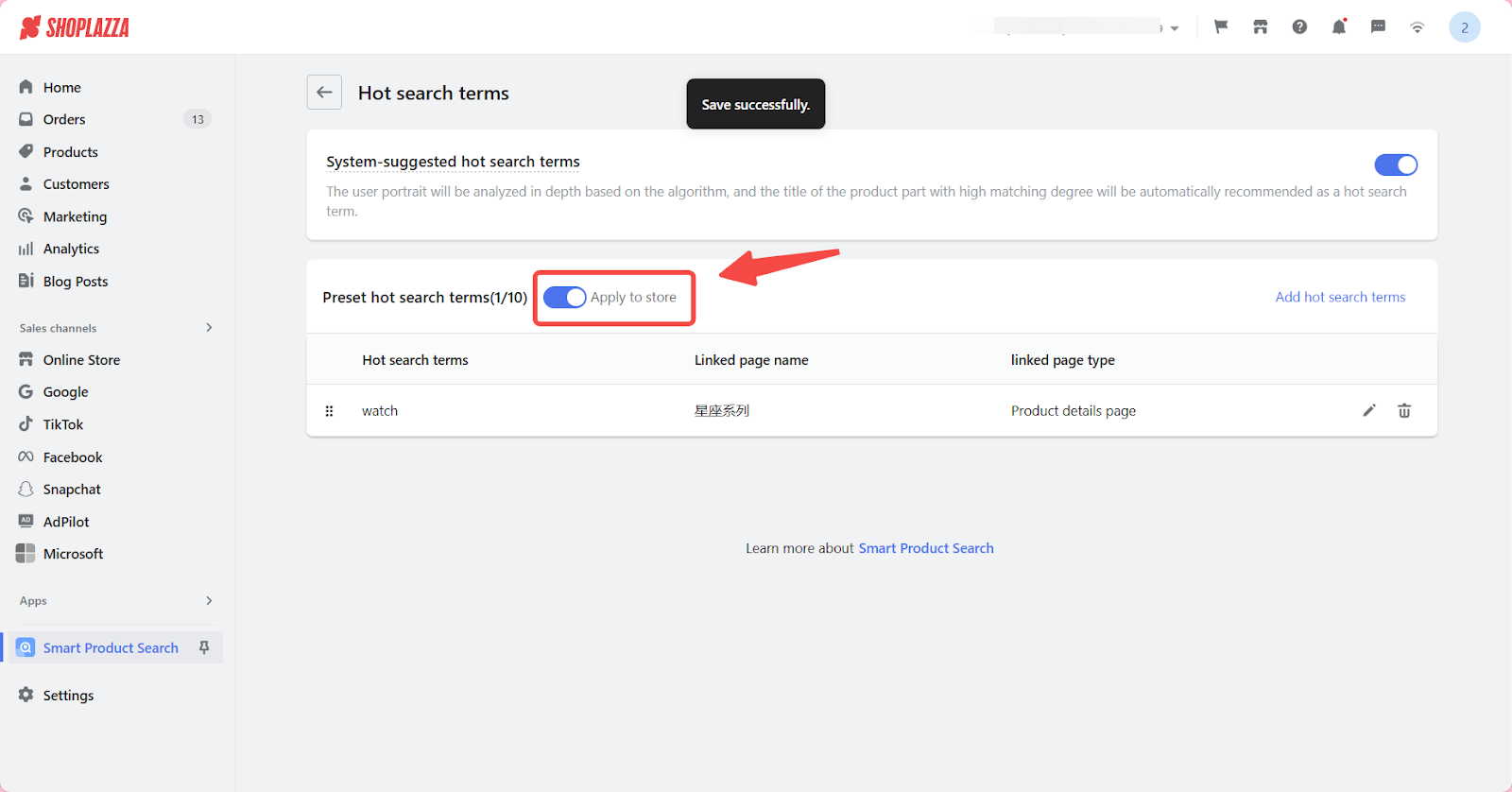
5. Enable user search history: In the Search term tab of the app, find the User search history section and toggle it on. This displays a customer’s past search terms when they click the search bar. These are stored in the browser cache and will disappear if the browser is changed or cleared.
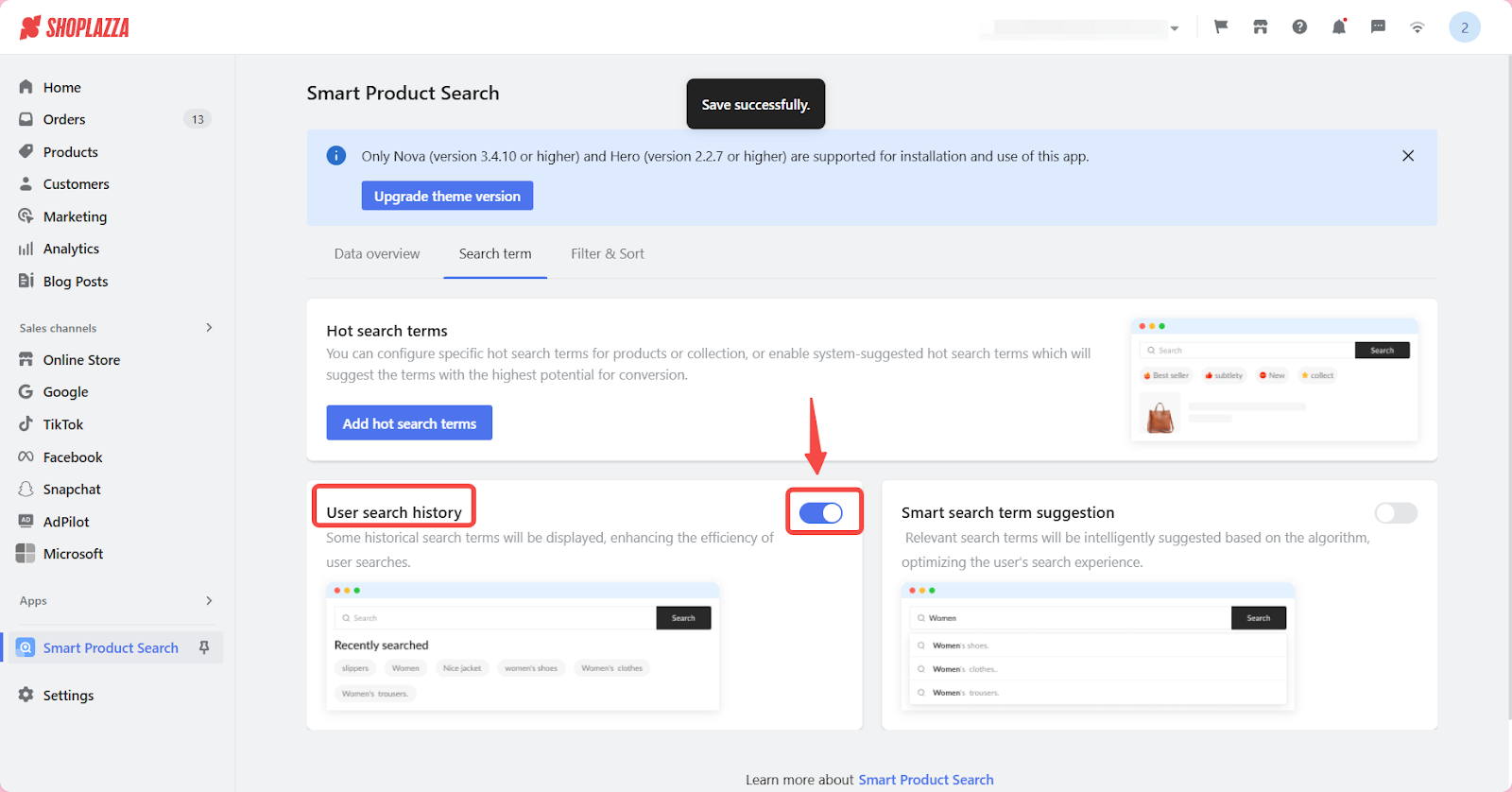
6. Enable smart search term suggestion: In the Search term tab, toggle on Smart search term suggestion to show real-time recommendations as customers type.
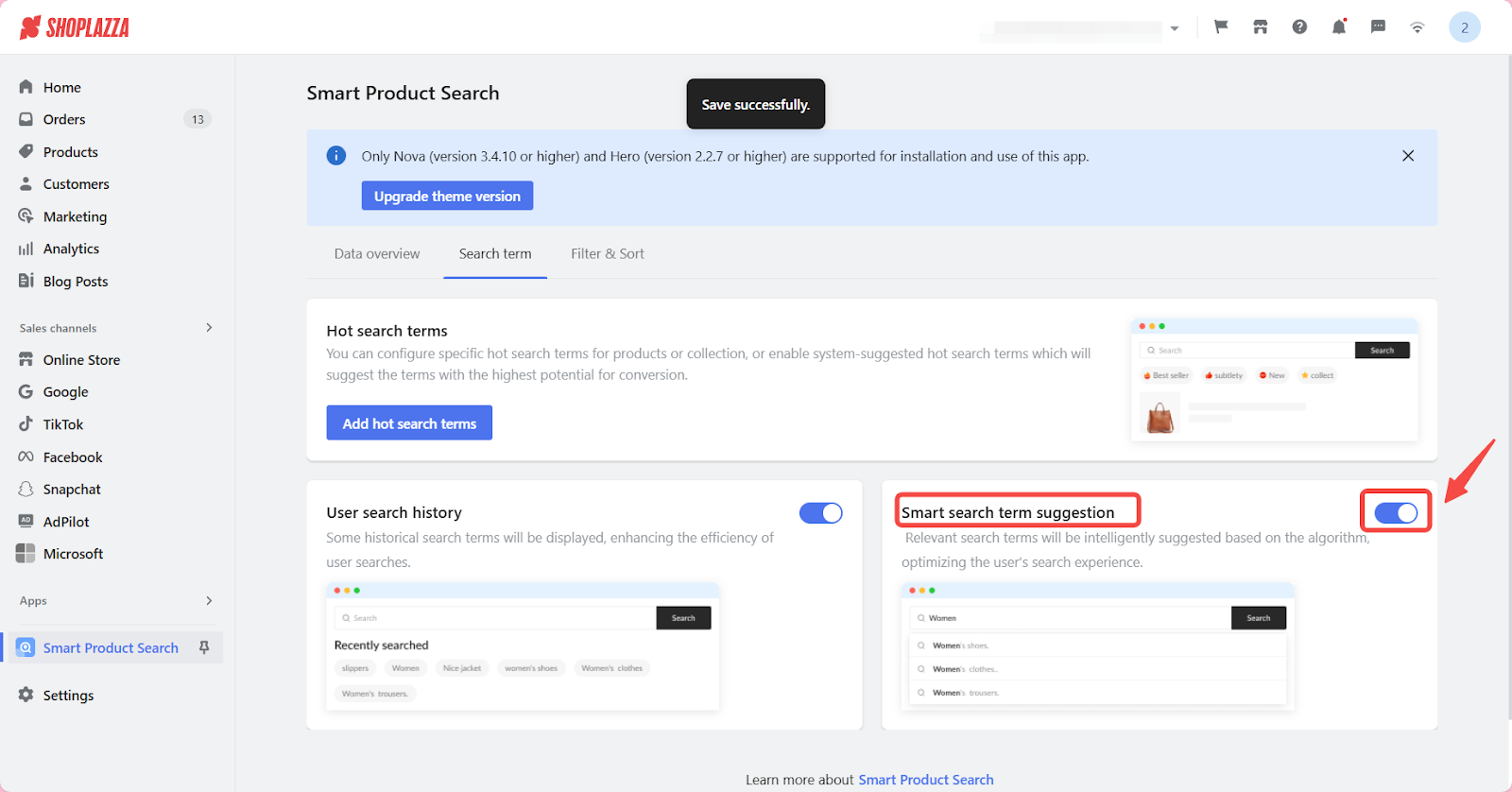
Note
A maximum of 6 preset hot search terms will appear across both desktop and mobile devices.
7. Preview your setup: View how the search terms appear in your store and make changes if needed.

Understanding the data overview
The Smart Product Search app tracks how search contributes to clicks, cart additions, and purchases. You can view a quick summary or open a detailed report.
1. View data overview: Go to the Data overview tab to see a 7-day snapshot of search activity in your store. This summary includes the following metrics:
- Total sales: The total amount from orders placed by customers who clicked products in search results.
- Visits: The number of store visits that began with a product search.
- Click-through rate: The percentage of customers who clicked on a product after performing a search.
- Add-to-cart rate: The percentage of product views from search that led to items being added to the cart.
- Conversion rate: The percentage of search-driven visits that ended in a completed order.
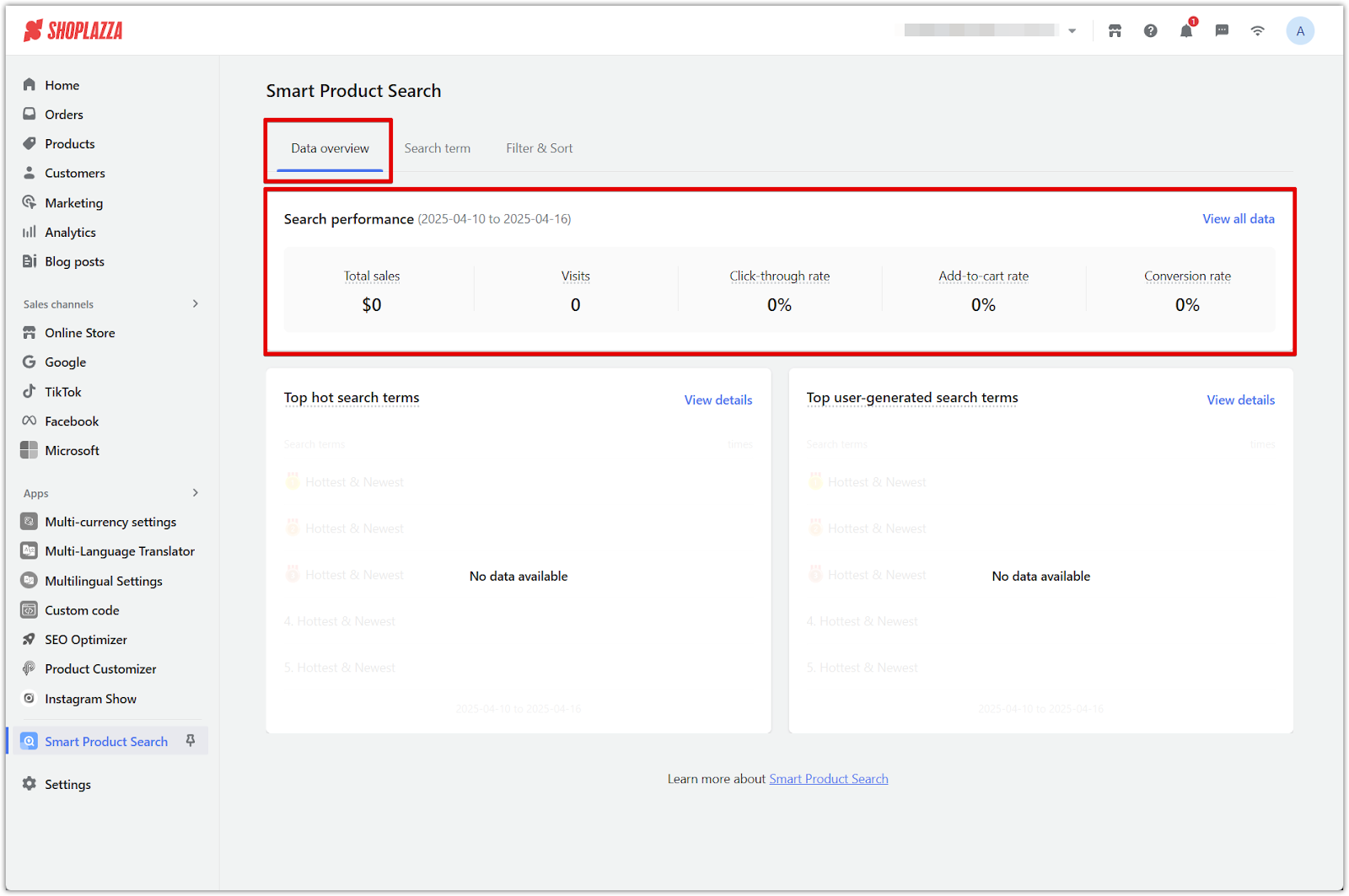
2. Access full report: Click View all data in the top right corner of the summary to open the full Search performance page. This detailed report includes daily breakdowns of each metric and allows you to filter results by date. Use it to evaluate how effectively your search setup is driving product engagement and sales over time.
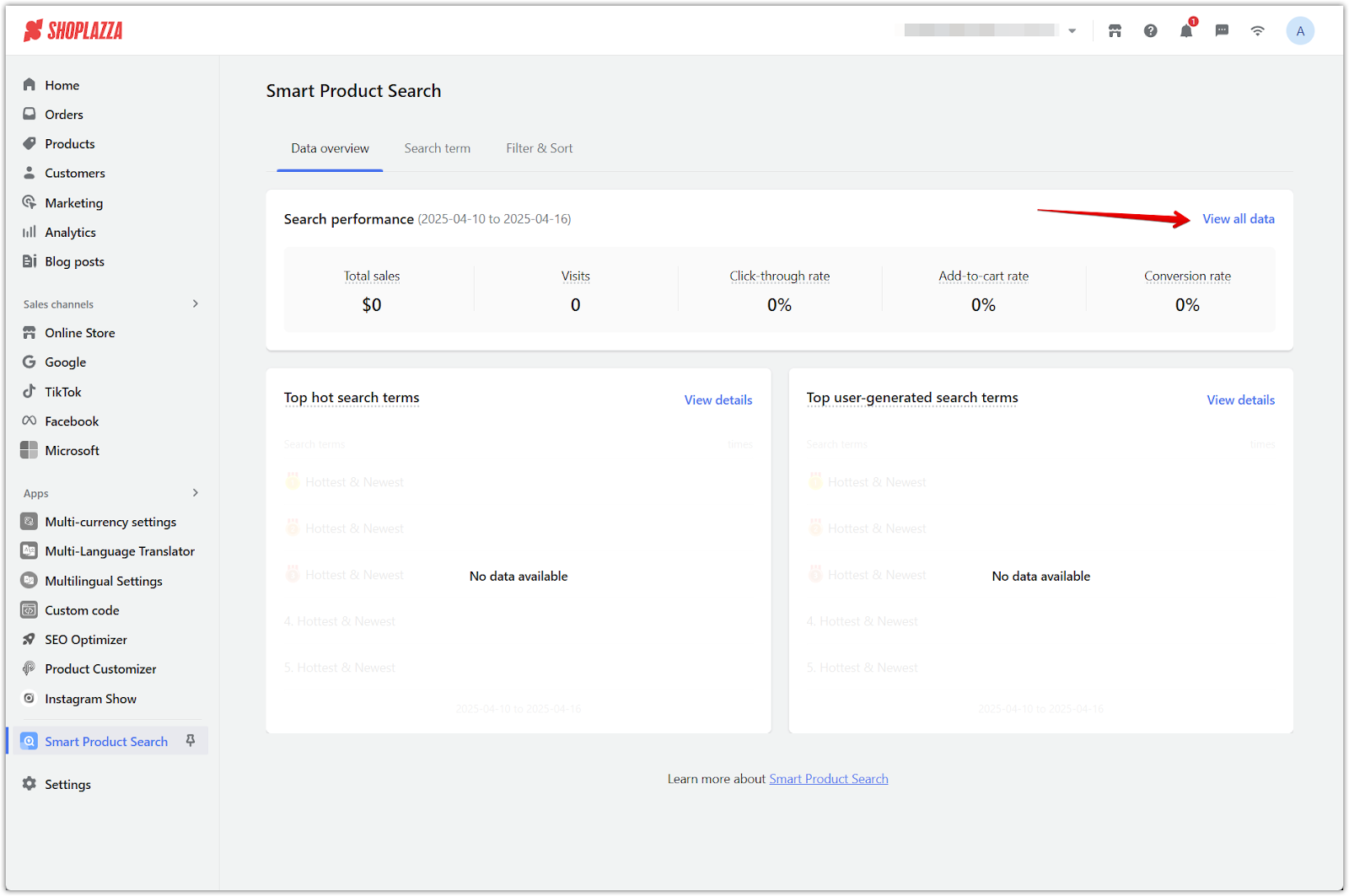
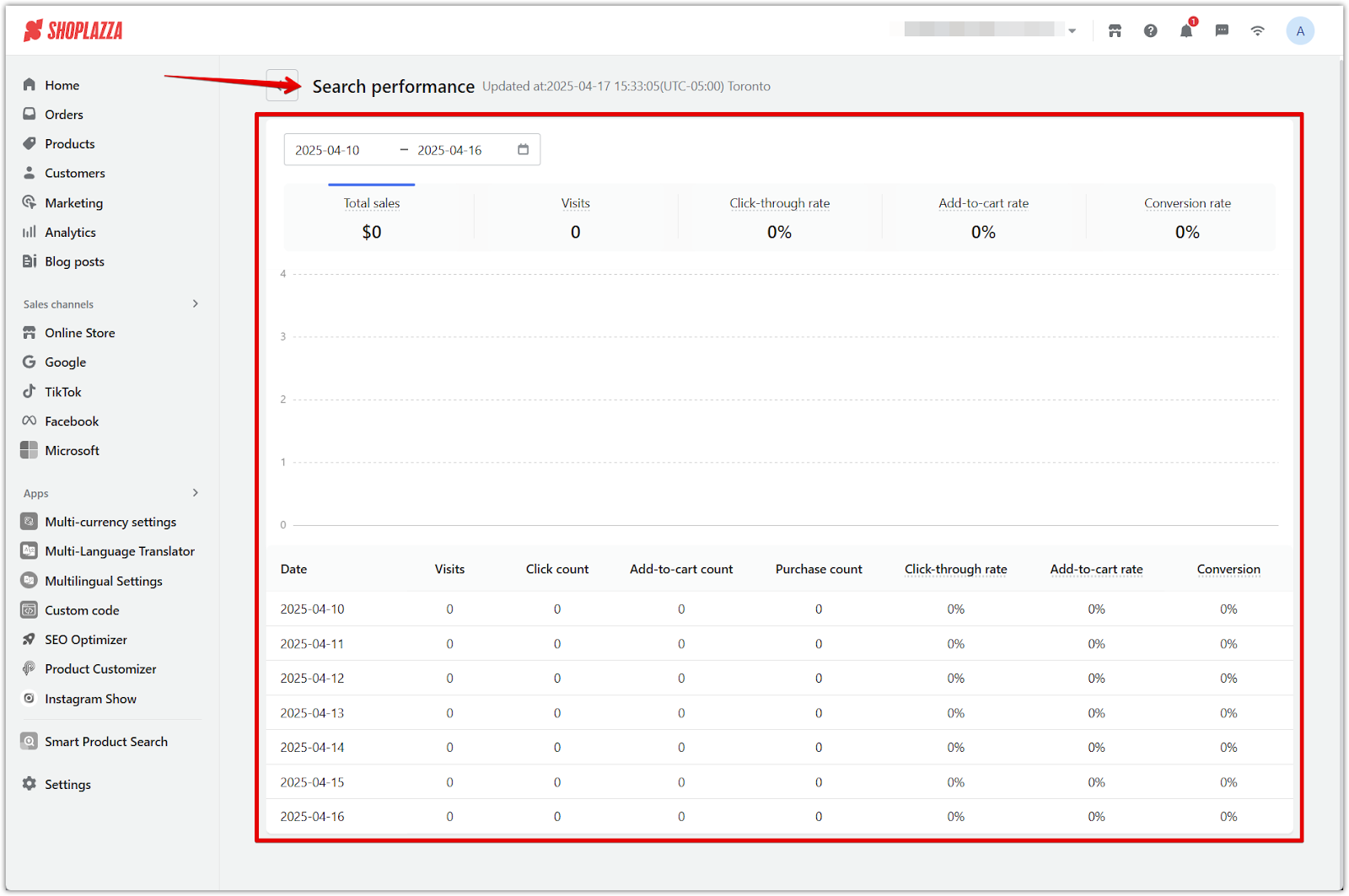
Top hot search terms
This section ranks the most clicked search terms from both your preset terms and system-generated suggestions.
1. View performance details: Click View details to open a full report of hot search terms. You can filter by date and search type to see which keywords are performing well. If certain terms have low engagement, consider replacing them with more relevant or timely options. This helps keep your search experience aligned with what customers are looking for.
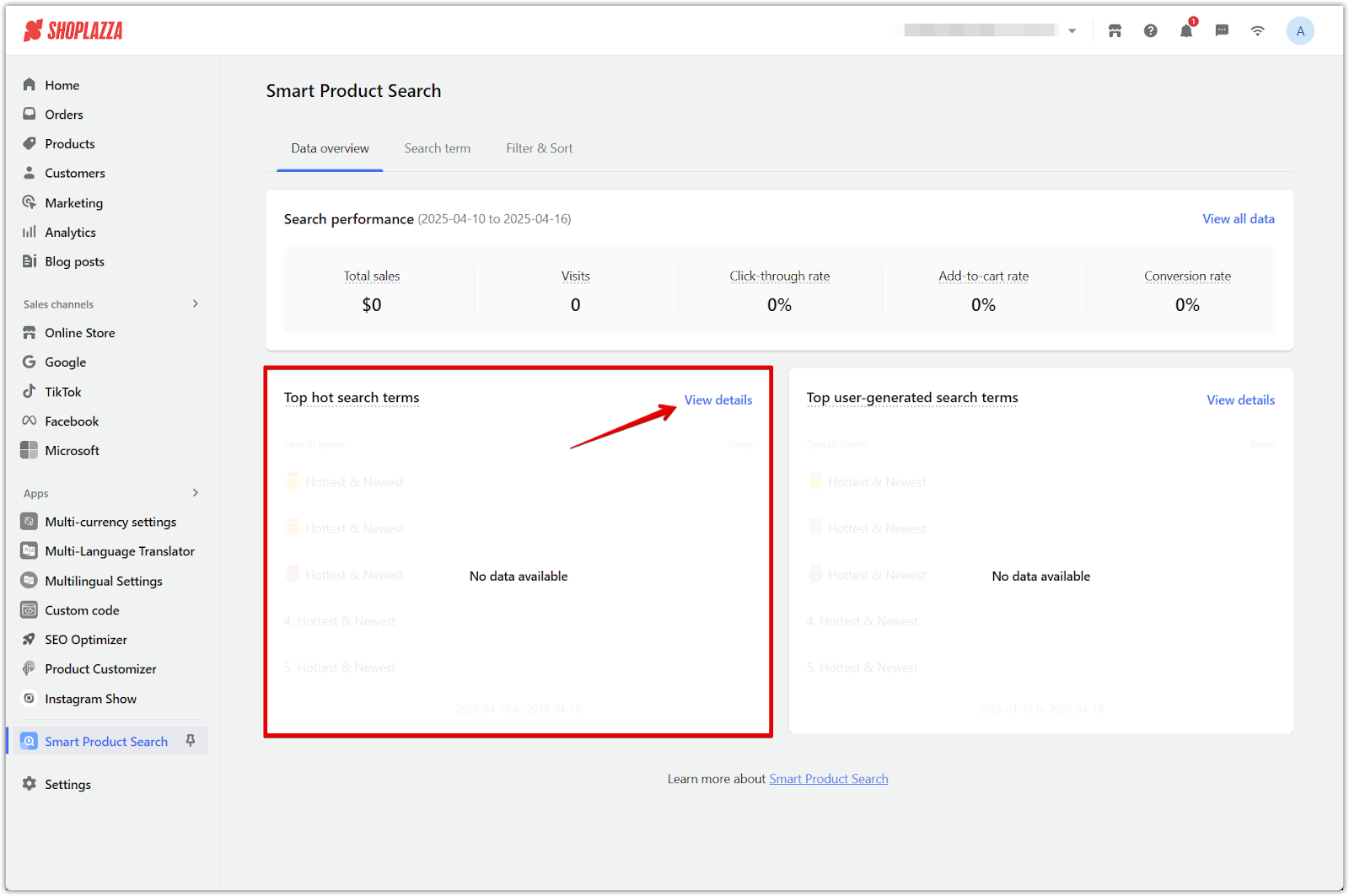
Top user-generated search terms
This section lists the most common keywords customers type directly into your store’s search bar. It gives you a clear view of what shoppers are actively looking for, beyond the terms you’ve configured.
1. View customer search behavior: Click View details in the top right corner to open a report of the top 50 user-generated search terms. Use this data to compare actual search activity with your product availability. If customers are searching for items you don’t offer or can’t find easily, consider updating product tags, adding new items, or refining your preset hot search terms to better match demand.

By combining hot search term setup with real-time search performance data, the Smart Product Search app gives you powerful tools to improve product discovery and boost conversions. Use the insights to fine-tune your keyword strategy, adjust product offerings, and guide customers more effectively.



Comments
Please sign in to leave a comment.